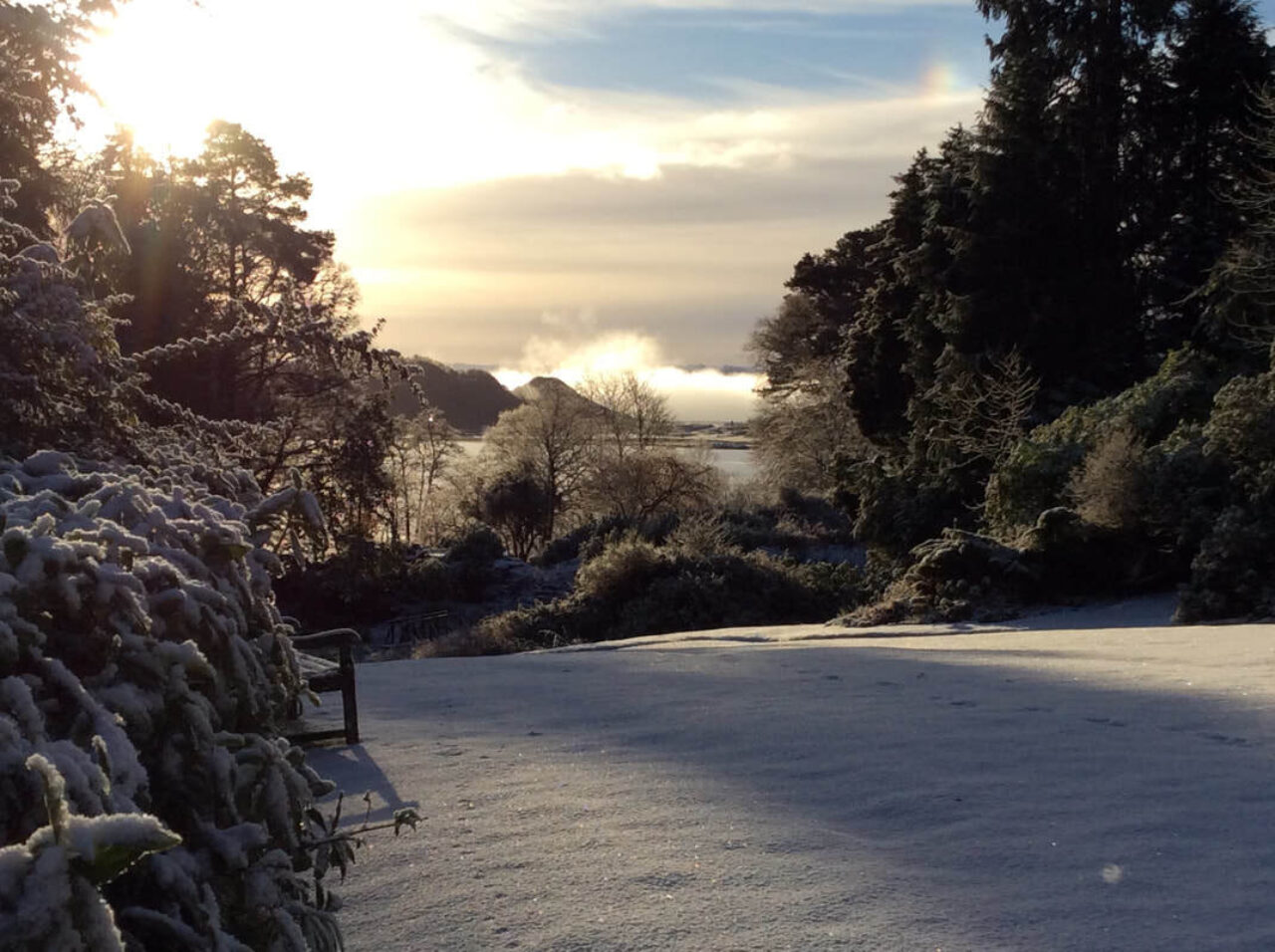I'm cosily installed by the fire in a cottage on Eilean Shona off Ardnamurchan, a 2000 acre island where I am on a winter retreat. I look out over the waters of the South Channel of Loch Moidart towards the imposing 14th century ruin of Castle Tioram. This panorama is the backdrop for a steady stream of avian comings and goings; through binoculars I sometimes see a flock of rock doves, wild cousins of the feral pigeons found in cities, wheeling around the ramparts of the castle; on the water are small parties of red breasted-mergansers, raffish males leading dowdy females, sometimes a solitary goldeneye, once a male eider; occasionally a peregrine dashes across, hoping to surprise a dove or a duck. Jet-black shags dive, then fly off to dry their wings on the rocks.
One afternoon a handsome great northern diver worked its way along the channel, spending almost as much time under water as on it. In the evenings the imposing form of the resident juvenile sea eagle (they are sometimes known as flying barn doors) wings its way across on its way to roost. The constantly changing wave patterns occasionally break to reveal the rounded head of a passing otter. Angular herons from a nearby heronry stalk the shallows, keeping an eye open for sea eagles, who regard them as both food and competition.
The magnificent 19th century plantations provide refuge for many of the island's small birds. Blue tits are concentrated in a single mobile flock of 100 or so, frequently joined by great tits, goldcrests, coal tits (already breaking occasionally into their see-saw song); a variety of other birds seem to tag along loosely for security, chaffinches, blackbirds, song thrushes, a few redwings from Scandinavia. Inquisitive robins fly over to investigate you, dunnocks and wrens skulk in the undergrowth; jays announce your arrival with raucous screeches in the gnarled oaks. There are other, more elusive flocks around-it is worth getting to know the wheezing call of siskins and the rattling of redpolls if you want to see them. Once over the wind I heard the "chup-chup-chup"s of a group of crossbills, but could not locate them. The island's resident pairs of great-spotted woodpeckers are most easily found by following their their far-carrying "tchick".
On walks there have been periods of sunlit stillness, the air full of the exuberant piping of oystercatchers and the mournful song of curlews, punctuated by the deep croaking of ravens; at other times the wind blows up and it is hard to imagine how birds can survive-we almost tripped over an unfortunate heron which seemed to be giving up the struggle. At this time of year there are few birds on the windswept tops, just a few wisps of meadow pipits and the odd woodcock, for whom even when it blows a gale the west coast is mild compared to their frozen breeding grounds in Russia. Large numbers fly over the North Sea on full moons in November and December, and slowly work their way westwards in search of milder air. There has been a big freeze inland while I am here, and today on a path through boggy woodland I put up a dozen woodcock, where last week there were none. When I emerged into the open the young sea eagle flew straight over my head, checking me out and causing the hinds on the hill to freeze.
Eilean Shona's birds do not always give themselves up easily; however, over time the island gives up its secrets, and after almost two weeks I am still adding a new bird or two to my list nearly every day.
